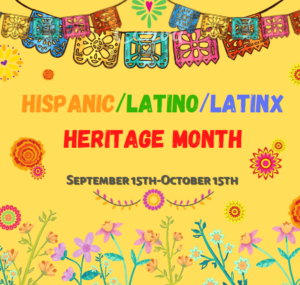What is it?
It is a period from September 15th to October 15th in the United States for acknowledging the significance, contributions, and influence of Hispanic/Latino/Latinx individuals within the United States. It is a time to celebrate their culture, history, and to remember where they came from.
Do you know when it started?
The Hispanic heritage recognition started in 1968, however, it was only for a week. Later on, it extended for a whole month. This important celebration starts in the middle of September since many countries in Latin America celebrate “National Independence Day” around the same time.
***Note: There are two links for a trivia game at the end of this post (one in Spanish and another one in English). If you feel brave to take the trivia before reading this post, go ahead and have fun!!! Otherwise, you are welcome to take it after you are done reading 🙂
When do countries celebrate their Independence Day?
- Guatemala (Sep 15)
- Honduras (Sep 15)
- El Salvador (Sep 15)
- Nicaragua (Sep 15)
- Costa Rica (Sep 15)
- Mexico (Sep 16)
- Chile (Sep 18)
- Belize (Sep 21)
Key facts about the nation’s Latino population (Language, Geography, and origin)!!!
- Did you know that the Hispanic/Latino population reached around 62.1 million in 2020, up from 50.5 million in 2010?
- In 2020 the Hispanic/Latino people made up around one-in-five (?) people in the United States. Making this population occupied 19% of the nation’s population.
- According to the 2020 census the number of Latinos who identified as multiracial increased dramatically. More than 20 million Latinos identified with more than one race!
- California was identified with the highest number of Hispanic/Latino ethnic and racial populations since 2014.
- The three countries with the highest increase of Latino/Hispanic population are; Texas, California, and Florida.
- Latino/Hispanic Populations English proficiency is growing. In 2019, 72% of the Latino population ages 5 and older spoke English proficiently. On the other hand, the use of Spanish at home has decreased (especially among those born in the US).
- Latino/ Hispanic population had an increase regarding college experience. Since 2019, 42% of Latino/Hispanic adults (ages 25 and older) had at least some college experience compared to the statistics from 2010 (36%).
- The number of Latinos enrolled in college also increased from 2010 to 2019, from 2.9 million to 3.6 million.
- 2000 marked the first time Hispanic surnames made the list of the 15 most common surnames in that year’s census. According to the 2000 census, Garcia was the most common surname ( total of 858,289).
- According to a 2018 census estimate, the U.S. Hispanic population will reach the size of 111.2 million by 2060!!
States with a population of more than 1 million Hispanic/Latino residents as of 2019!
According to the Census, there are 12 states with more than 1 million Hispanic/Latino residents:
- Arizona
- California
- Colorado
- Florida
- Georgia
- Illinois
- New Jersey
- New Mexico
- New York
- North Carolina
- Pennsylvania
- Texas
CONGRATULATIONS!!! if you made it through the whole post. I hope you were able to gain a little extra knowledge regarding Hispanic/Latino/Latinx Heritage Month.
AARP Trivia Links (How Much Do You Know About Hispanic Heritage in the United States?):
Links to Post Sources:
- Selected Resources For Teachers (Hispanicheritagemonth.gov- The Library of Congress)
- Key facts about U.S. Latinos for National Hispanic Heritage Month (Pew Research Center)
- How Much Do You Know About Hispanic Heritage in the United States? (American Association of Retired Persons)
- ¿Cuánto sabes de la herencia hispana en Estados Unidos? (American Association of Retired Persons)
